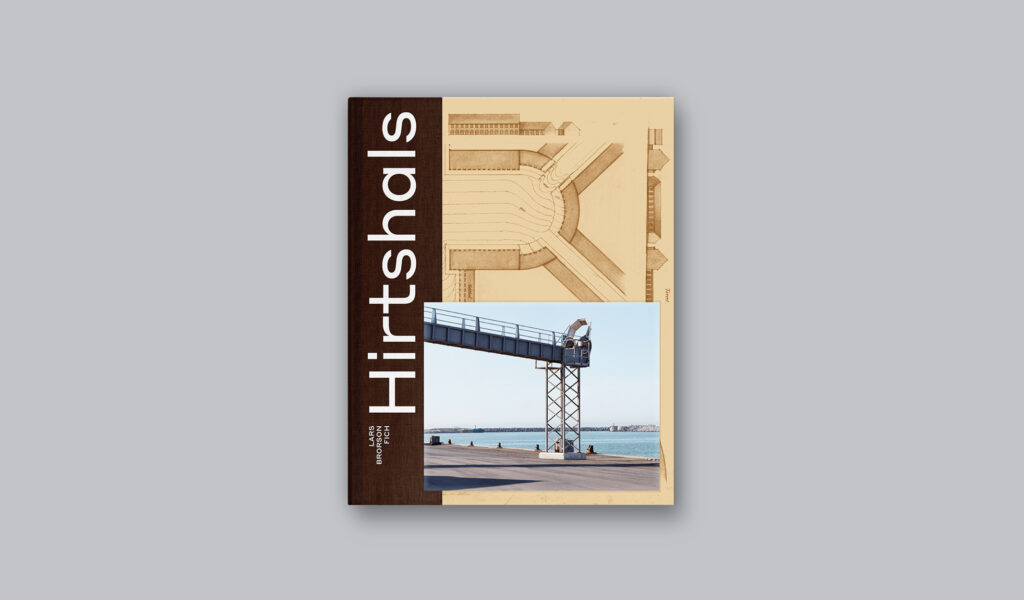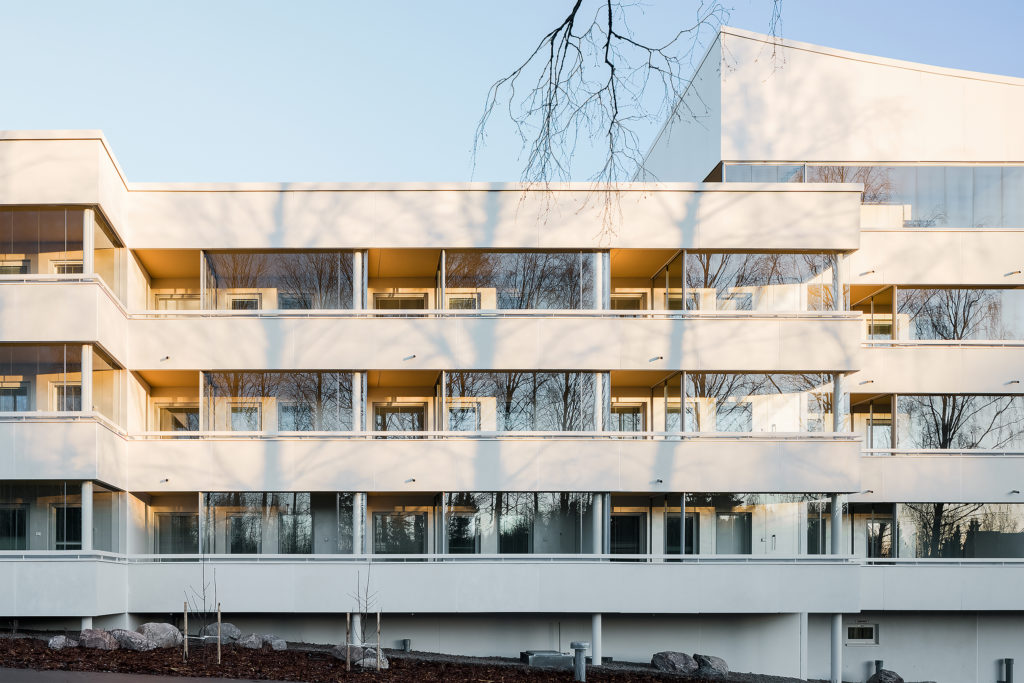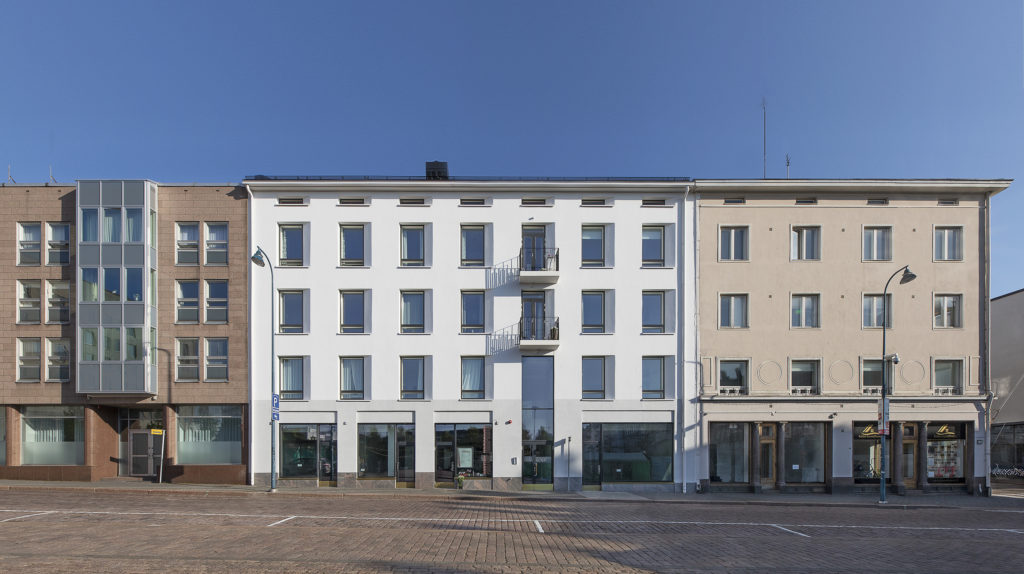Small Town Attraction

An art museum in Ekenäs shows us that architecture plays a role in revitalising small towns.
The Chappe Art Museum opened its doors in April and has already brought a boost to the number of tourists visiting Ekenäs, one of Finland’s oldest and best-preserved traditional wooden towns. This is a testament to the potential of infusing small towns with renewed vitality by combining culture services and architecture. In addition to the art, Chappe attracts visitors because of the inventive museum building, skilfully designed and implemented down to the smallest detail.
Chappe is an art museum established and maintained by a private art foundation, which will be donated to the municipality of Raseborg, while the foundation will continue on as a co-sponsor. The foundation also served as the developer in the museum project. In 2018, the foundation organized an invited architectural competition, which was won by JKMM Architects.
The design brief was challenging: a cramped corner of a plot in the culture quarter in central Ekenäs, which also houses existing Raseborg Museum buildings and the Galleria Elverket of modern art. The site is enveloped amidst protected urban fabric and built cultural heritage of national significance.
The end result is a modern building with plenty of personality that forms a considered contrast to the surrounding old buildings and yet, due to its size and timber cladding, settles in with ease as part of the small-scale wooden town milieu. There is an irregularity to the forms of Chappe, just as there is in the free-form, medieval tradition of the street grid in Ekenäs Old Town. Viewed from the outside, the building is angular and sculpturesque. The diamond-shaped footprint gives rise to exciting interior spaces, in addition to creating tension in the views towards the town and the outdoor area.

Chappe Art Museum
JKMM Architects / Asmo Jaaksi, Gerrie Bekhuis
Location Kustaa Vaasan katu 11, Ekenäs
Gross Area 1 210 m2
Completion 2023
More photos and drawings of the project →
The welcoming museum entrance opens out to the street, and the small foyer can be seen from the outside through a glass wall. The foyer floor is paved in unhewn granite slab, the walls are clad in timber battens, and the furniture is made from trees felled from the site. The foyer ceiling is covered and illuminated by Petri Vainio’s artful and original light installation Spegling (“Reflection”), which is made up of some 35,000 steel slats that ripple and shimmer like foliage as they move to the air current. It is an exceptionally accomplished example of an organic combining of modern architecture and art, much in the same way as Vainio’s previous pieces made for buildings designed by JKMM. The built-in works of art at Chappe also include Havet (“The Sea”) by Karin Widnäs, which comprises the blue-toned, watercolour-esque ceramic wall tiles in the stairwell.
Chappe houses exhibition rooms on three levels, and they are modifiable with the aid of a custom-designed partition wall system. From the foyer, visitors can step down half a level to a multipurpose space that opens out towards the backyard through a large window. A narrow staircase leads up to the top floor, as well as to the basement, which has an underground connection to the Raseborg Museum main building. Natural light is brought into the underground exhibition room through a lightwell positioned in the middle of the yard.
The top floor houses the museum’s two main exhibition halls. Despite their compact size, they boast a bright and spacious atmosphere thanks to the tall ceilings, with light flooding in both from the sides and from above. The nearly white colour coating on the floor further adds to the brightness. The larger hall has a sizeable bay window that tempts visitors to sit on the wooden bench and gaze out over the town, while the smaller room affords a view towards the street. When light-sensitive pieces are on display, the windows are fitted with darkening curtains.

Chappe is made of wood and concrete. The calculated life of the frame is a hundred years, and the facades are also promised fifty. The basement and ground floor levels have a concrete structure. Upon them rests the timber-framed top floor with laminated-timber columns supporting the laminated-timber beams of the roof. The interior wall surfaces are clad in CLT panels, which also serve as bracing for the frame, and the dormer rooflight structures entail thicker cellular sheets. The top-floor window bays and ceilings – as well as the entrance foyer walls – are clad in wood battens treated with a clear, flame-proof impregnant. Wood can be seen and felt in the harmonious atmosphere and pleasant acoustics.
The pitched roof with its streamlined, erect dormers is a prominent element of Chappe’s architecture. In a few years, the galvanized sheet-metal roofing will become patinated into a grey matt finish. This is a well-resolved solution, as is the novel iteration of a wooden facade with vertical spruce beam cladding. The angular shapes sawn into the cladding introduces a relief-like effect that is alive with the variations between light and shadow. The spruce surfaces are painted black with a pigmented, semi-transparent silicate paint that does not form a membrane and allows the wood to breathe. The designers had their mind set on a black exterior, as was presented already in the competition entry, but the end result is dark grey.

Chappe’s dark looks have been a hot topic in Ekenäs, and the blackness of JKMM’s competition entry was also criticised in the competition’s jury report: “the jury questions the facade colour choice”. Dark exteriors are in fashion – JKMM’s works also include a black hospital – but little attention has been paid to the effect of sunlight on indoor temperatures during heat waves. The rays beating down on a dark, well-ventilated wood facade are unlikely to make Chappe’s carefully air-conditioned interiors particularly uncomfortable, but a higher variation in temperature and humidity may wear on the wood surfaces more than usual, causing heat expansion, drying and cracking. Therefore, the protective effect against UV radiation of the dark-pigmented wood surface may be a moot point. In purely design terms, however, the dark colour suits Chappe and makes it stand out among the surrounding buildings.
To counterbalance the migration towards growth centres and the Helsinki-centric views, we need more high-quality culture-sector projects like Chappe in the regions and small towns of Finland to strengthen local identities and attractiveness. With the constant cuts in state and municipal funding for the culture sector, Chappe is an excellent example of fostering the common good through private funds. ↙
HARRI HAUTAJÄRVI
Architect, DSc (Arch.), and architecture critic. Runs his own practice, designing, writing and doing research. Served in the pre-selection jury that shortlisted Chappe as one of the finalists for the Finlandia Prize for Architecture 2023.




